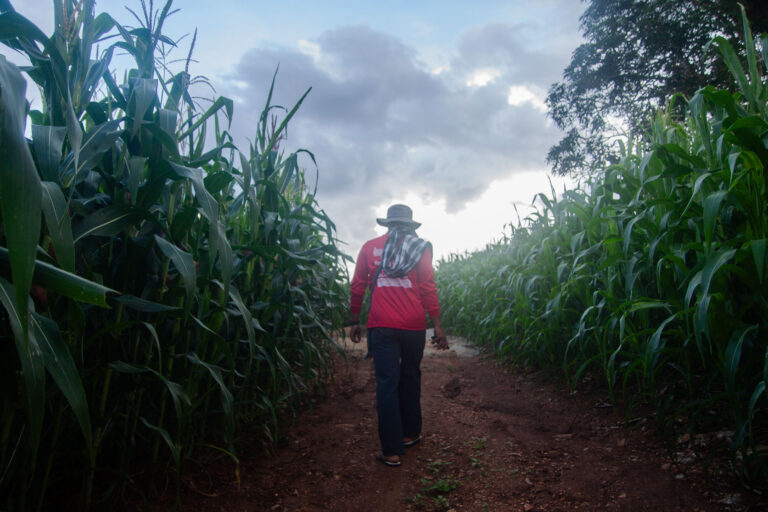- A tunnel collapse at the site of a planned hydroelectric dam in Sumatra has killed a Chinese construction worker, bringing the death toll at the project site to 16 in the space of less than two years.
- The project is already hugely controversial because it sits in the only known habitat of the Tapanuli orangutan, a critically endangered species that scientists warn will be pushed further toward extinction if their habitat is fragmented by the dam.
- Opponents of the Chinese-backed project have long argued that the site’s topography and location near a fault line make it “wholly unsuitable” for a large-scale infrastructure project, and that the developers should abandon it.
JAKARTA — Indonesian police are investigating possible negligence in the death of a Chinese construction worker at the site of a controversial hydroelectric dam in the only known habitat of the critically endangered Tapanuli orangutan.
The victim, identified as 52-year-old Wang Jian, died on the morning of Aug. 21 when the tunnel he was working in at the PT North Sumatra Hydro Energy (NSHE) site collapsed. His death brings the number of people killed at the site to 16 in the space of less than two years.
Imam Zamroni, a local police chief in the project area in South Tapanuli district, North Sumatra province, said the workers had planned to carry out blasting in the area as part of the construction work. But before they could do so, the tunnel collapsed in four spots.
Wang and other workers then entered the tunnel to install warning signs. Another section of the tunnel collapsed while they were inside, crushing Wang under rubble, Imam told local media. He died on the way to hospital, the police chief added.
Police say Wang’s death appears to have been purely accidental, but they’re still investigating to determine whether there was negligence on the project developer’s part, such as lack of safety procedures, according to Imam.
The project developer, NSHE, told Mongabay it would wait for the result of the police’s investigation before making any comment on the incident.

The tunnel collapse is the latest deadly incident at the site, with fatalities now at 16 since December 2020, prompting renewed concerns over the safety of the project.
“Our thoughts are with the family and co-workers of the latest victim to lose his life in such tragic circumstances,” said Amanda Hurowitz, senior program director for Southeast Asia at U.S.-based campaign group Mighty Earth. “But the question is: How many more lives are going to be lost, or workers injured, in the construction of this ill-conceived and unnecessary dam before the project is stopped in its tracks?”
Environmental activists and scientists have flagged the area’s susceptibility to landslides, due to high rainfall, the hilly terrain, and poor drainage, as well as earthquakes, with the hydropower project sitting near a known tectonic fault line.
Teuku Abdullah Sanny, a geophysicist at the Bandung Institute of Technology (ITB), said deforestation for the construction of the dam would only exacerbate the risk of landslides.
In December 2020, at least one worker went missing and is presumed dead after a landslide struck the area. In April 2021, a torrent of mud swept away workers and locals after heavy rains pounded the site, claiming the lives of 10 locals and three workers. In May this year, a 46-year-old worker from China, Zhan Guochun, died after a falling tree struck him while he was working.
“Because of the steep topography, if the forest is cleared for a dam, the soil will dissolve, erosion will occur, and landslides become inevitable,” Teuku said.
The China-backed project is already controversial for its location in the Batang Toru forest, the only place on Earth where Tapanuli orangutans (Pongo tapanuliensis), a critically endangered species, are known to occur.
An estimated 767 Tapanuli orangutans still live in the forest, divided among three subpopulations, according to a study. Researchers say the dam would further fragment their habitat, increasing their risk of extinction.
“The Batang Toru ecosystem is wholly unsuitable for this project,” Hurowitz said. “This dam is located in a highly sensitive area, home to the Tapanuli orangutan, the world’s most endangered Great Ape. Repeated landslides have killed fifteen individuals, and now a tunnel collapse has claimed yet another life. It seems like this project is just cursed, and it’s time for its backers to cut their losses.”
Hurowitz called on the Chinese government to end its $277 million involvement in the project, saying that China can’t claim to be protecting biodiversity if it pushes ahead with the Batang Toru project and putting an entire species of orangutan at risk of extinction.
“We hope that China will instead use its influence to protect Batang Toru and its iconic wildlife, as part of its many efforts to support an ecologically harmonious civilization,” Hurowitz said. “Changing the direction of this project would show China is serious about realizing its commitments to Nature and climate.”
Banner image: The Batang Toru River, the proposed power source for a Chinese-funded hydroelectric dam. Image by Ayat S. Karokaro/Mongabay-Indonesia.
FEEDBACK: Use this form to send a message to the author of this post. If you want to post a public comment, you can do that at the bottom of the page.














